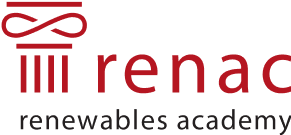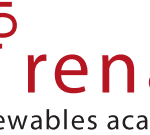This website uses cookies so that we can provide you with the best user experience possible. Cookie information is stored in your browser and performs functions such as recognising you when you return to our website and helping our team to understand which sections of the website you find most interesting and useful.
Customer-specific
programmes
Applying wind power offshore
- annual energy production, balancing power needs, offshore wind trends, short-term forecast, technology, wind resource
- Wind energy
Content
Module 1: Wind resource
Module 2: Technology
Module 3: Offshore wind trends
Module 4: Annual energy generation
Module 5: Economics
Module 6: Short term wind power forecast and balancing power needs (power system integration)
Learning objectives
Module 1: Wind resource
A participant who met the objectives of this module should be able to
- apply the wind power density calculation, the vertical wind shear profile and surface roughness
- apply the mathematical description of wind shear with the logarithmic law and the Hellmann power law and conduct the calculation of wind shear exponent and roughness length with measured wind speed data
- describe a wind speed distribution with the Weibull equation with shape parameter and scale parameter and understand the shape of different wind speed distribution curves
Module 2: Technology
A participant who met the objectives of this module should be able to
- explain the standard horizontal-axis wind turbine configuration
- recognize the development wind turbine rotor diameter and hub height and understand the advantages and disadvantages of longer rotor blades
- calculate the specific wind turbine power
- explain wind farm generator type “double fed induction generator” and type “fully converted turbine”
Module 3: Offshore wind trends
A participant who met the objectives of this module should be able to
- describe actual trends regarding turbine size, wind farm location, wind turbine rated capacity, wind farm size, water depth and distance to shore and floating wind turbines.
- explain industry activity and the supply chain regarding turbine manufacturers, substructures, foundations, vessels and cables
- describe investment and operation cost trends
Module 4: Annual energy generation
A participant who met the objectives of this module should be able to
- distinguish between free, gross and net annual energy generation
- describe and illustrate the characteristics of a wind turbine power curve
- calculate the annual wind energy yield using measured wind speed data and wind turbine power curves and compare outputs from different turbines
- apply full load hours and capacity factors to estimate the annual energy generation
Module 5: Economics
A participant who met the objectives of this module should be able to
- define levelised cost of energy (LCOE) and internal rate of return (IRR)
- describe cost trends and drivers for LCOE of wind power
- calculate fundamentals regarding debt, equity, IRR, LCOE of wind projects
Module 6: Short term wind power forecast and balancing power needs (power system integration)
A participant who met the objectives of this module should be able to
- name fundamental steps of short term wind power forecast and distinguish between a physical and statistical approach for wind power forecast
- define short term wind power forecast errors
explain the fundamentals of the methodology to calculate the balancing power needs of power supply systems with wind power
Target group
The training is targeted at
- professionals with no or little wind power knowledge and bachelor degree or comparable professional experience
- persons who would like to learn fundamentals of the annual energy generation, wind resource, technology, offshore wind power trends, economics and power system integration (short term wind forecast and balancing power needs)
Are you interested in a Customer-specific programmes?
Kindly fill out this questionnaire and attach it to the form on the right:
© 2024 | Renewables Academy (RENAC) AG



